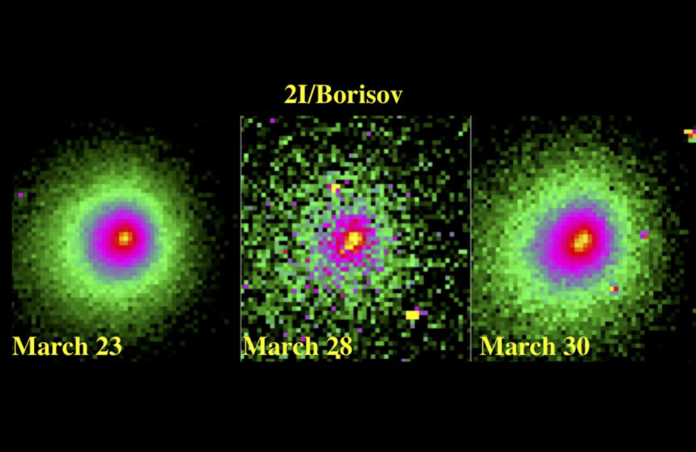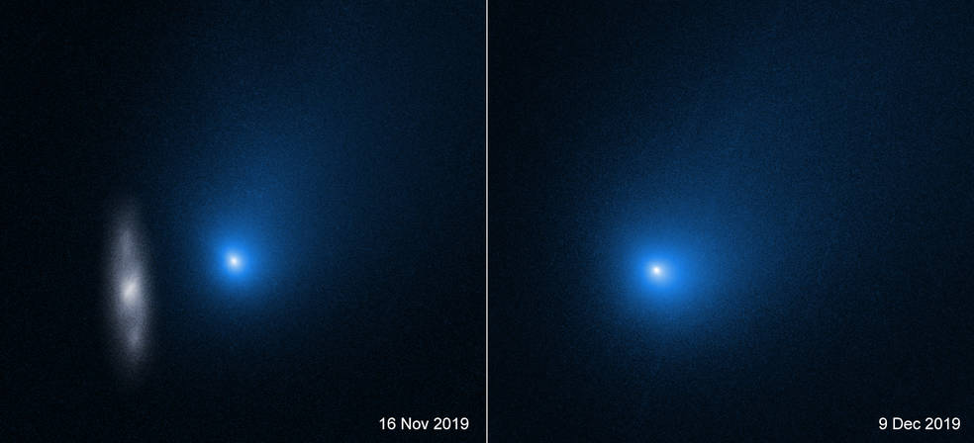Rare Interstellar Comet 2I/Borisov is Breaking Apart

The comet 2I/Borisov, an interstellar visitor discovered gliding through our solar system back in August 2019, is beginning to break apart. After studying observation data from the Hubble telescope, a team of astronomers has found that the comet is breaking up as it passes the Sun, undergoing nucleus fragmentation. The discovery comes as a somewhat disappointing (but not totally unexpected) blow to astronomers studying its complexities—2I/Borisov is one of only two local comets known to have originated somewhere outside the solar system.
Nucleus Fragmentation
It’s not at all uncommon for a comet to break apart as it comes to its closest approach to the Sun, or perihelion. As a comet reaches perihelion, the heat from the Sun affects the frozen gases and dust within. This, in turn, speeds up its rotation, causing the nucleus to fragment due to instability. Because of this, astronomers have been consistently watching 2I/Borisov, waiting to learn if the comet would pass by the Sun relatively unharmed, or meet its demise here in our solar system.
In fact, a couple of different teams of astronomers have been keeping a close eye on its perihelion journey, which began on December 8, 2019. By early March 2020, observations showed that the comet had increased in brightness, indicating an inevitable problem. The team, which was led by Polish astronomers Michal Drahus and Piotr Guzik, noted that "This behavior is strongly indicative of an ongoing nucleus fragmentation."

Unfortunately, their findings were confirmed by the end of March. According to further observations from another team, 2I/Borisov has fragmented into two pieces and is likely to continue breaking up. The team, which was led by David Jewitt of the University of California Los Angeles (UCLA), discovered that the fragmentation occurred within a week. The study notes that, “Images from UT 2020 March 23 show a single inner brightness core, like that observed in all previous HST images of 2I/Borisov. In contrast, images from UT 2020 March 30 show a clearly non-stellar core, consistent with two unresolved components separated by 0.1 arcsecond (180 km at the distance of the comet) and aligned with the main axis of the larger dust coma.”
The Death of 2I/Borisov
Although 2I/Borisov’s fragmentation is disappointing, especially since the comet has only been in our solar system for a short time, it will provide some valuable information. Not only will it offer insight into the fragmentation process, but astronomers will also be able to study the materials it's made of (using spectrum analysis) and compare those findings to comets native to our solar system. The study of 2I/Borisov may even provide some insight into our origins here on Earth. Astronomers will be observing the comet up until its final moment, after which more research on the interstellar traveler is sure to be published.